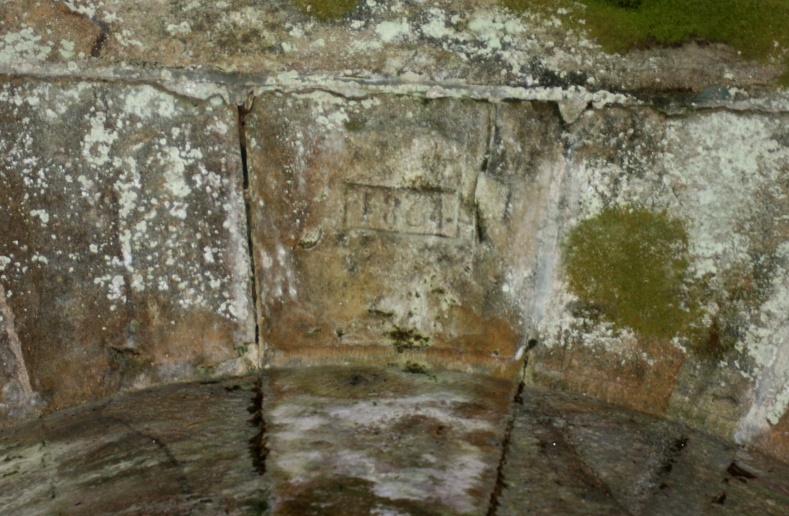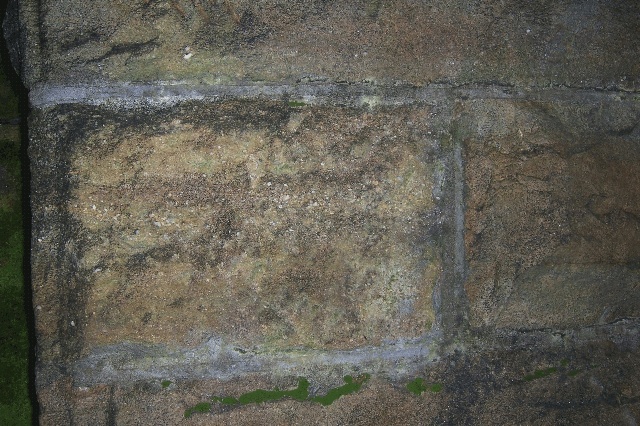
The 1864 Stone Arch Culvert Railroad Bridge is a structure to contemplate. Its massive sandstone base blocks sitting in “Orange”creek, expanding outward with its huge wing wall blocks, covered with years of bright green moss growth, to the inside arch barrel blocks with their tight fit and smooth fine finish and its rust and brown colors. Chiseled in some of the base blocks, Roman numerals and arrows can be viewed, done for the proper placement and direction of the blocks. Then, to view the skilled stone cutting of the abutment (facade) stones with some resembling the State of Oklahoma, on to the arched voussoir stones, finished with tight-fitting angles to the facade blocks.
You tend to gaze at the keystone block with its fine engraving of 1864 and think about the time and skill it took to be created by the Master Mason.

A feeling of the true height of the 1864 Arch Bridge comes when you stand on the top of the large parapet (top) blocks, viewing the creek below. You can only view the large spillway stones placed in the creek on the left side, facing up the grade, by walking through the dimly lit inside arch, due to the arch tunnel length, trying not to get your feet wet in the creek.
Standing on the actual Railroad grade, the 1864 Arch Bridge can hardly be seen. The parapet blocks covered with fallen leaves and ferns tend to hide the blocks, oblivious to the passer-by.
My co-researcher, Tim, and I took measurements of the 1864 Arch Bridge. The length of the arched tunnel is over 72 feet; the height is 13 feet 3 inches from the creek bed to the bottom of the arch with the total bridge height reaching 19 feet. The length of the parapet stones are 25 feet in width. The arch blocks start 8 ½ feet above the base blocks and the width of the arch is 10 feet at that point. The wing wall width from the right wing wall to the left wing wall covers a span of over 35 feet.
